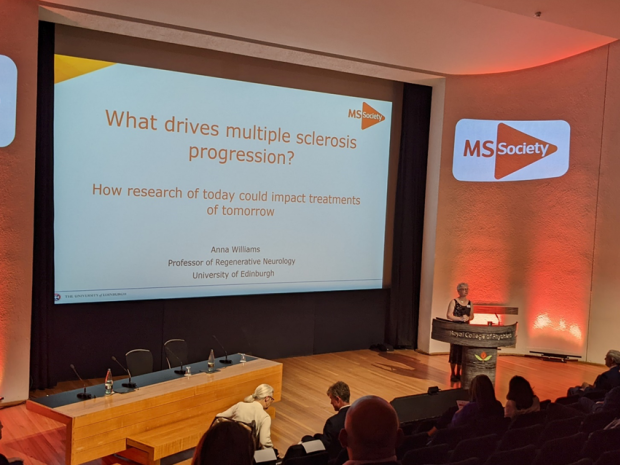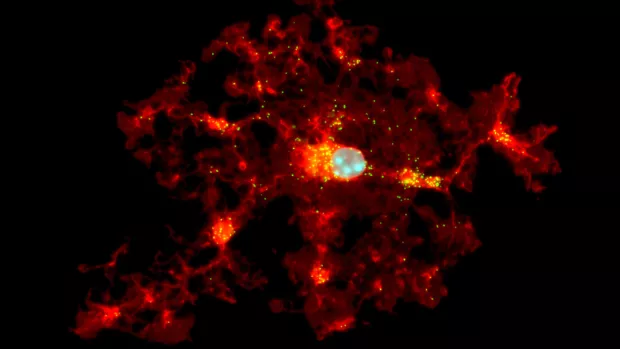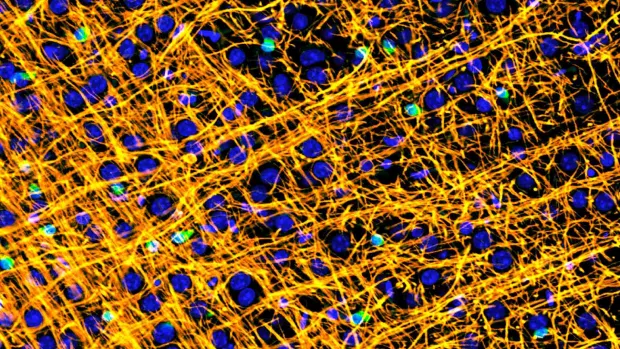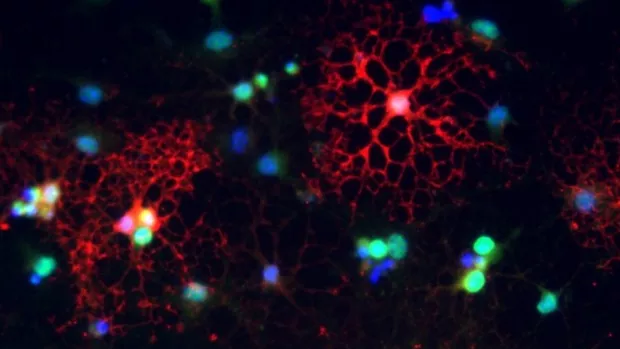
What drives MS progression? How research of today could impact treatments of tomorrow
Professor Anna Williams gave the 2022 Stop MS Annual Lecture. We learned about how her research lab is giving us a better understanding of MS and providing hope for the future.
Watch the full lecture on YouTube
What is the oligodendrocyte?
Anna started out by telling us her favourite cell is the oligodendrocyte. This brain cell makes myelin, the protective substance that wraps around nerves.
Oligodendrocytes help nerves send messages and provide them with nutrients to survive. She thinks the oligodendrocyte is the key to understanding why different people with MS progress differently.
Every oligodendrocyte is different
Her team is using a new lab technique to look at each oligodendrocyte individually. Every cell in your body contains DNA, your full set of unique information. But a cell only needs parts of that information to do its job.
So it copies out sections of information from the DNA that tell the rest of the cell what to do. An oligodendrocyte just copies out the sections it needs to be an oligodendrocyte – like instructions to make myelin.
Anna explained we already know every oligodendrocyte is different, copying out slightly different messages. And they wanted to see how oligodendrocytes in the brains of people with MS compared to people without MS.
People with MS have different oligodendrocytes
Anna’s team used tissue from the MS Society Tissue Bank. They looked at brains donated by 167 people, some with MS and some without. They studied the information copied out from every single oligodendrocyte - that’s 700,000 cells, each one with 3000 different messages!
The team could put the cells into groups according to what information they were copying. The people with MS had different groups of oligodendrocytes to people without MS.
Then, instead of grouping all the people with MS together, Anna’s team spotted three “profiles” based on their oligodendrocytes groups:
- “Standard”: groups of oligodendrocytes were not so different from people without MS.
- “Stalled”: more of the oligodendrocytes had less myelin.
- “Stressed”: oligodendrocytes copied out extra messages, all to do with cell stress.
What does this mean for people living with MS?
Anna thinks people might respond differently to potential myelin repair treatments depending on their oligodendrocyte profile. Future clinical trials could focus on one of these three profiles to identify the most effective treatments. But first, we need to find a way to identify these groups in living people. Like a marker in the blood.
Anna’s ultimate goal is to find ways to repair myelin. She believes learning more about the oligodendrocyte will help provide better treatments for everyone with MS.



